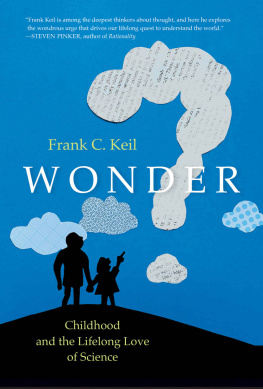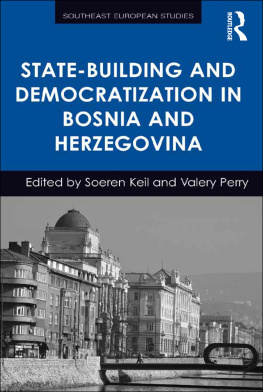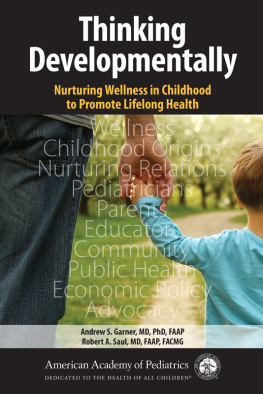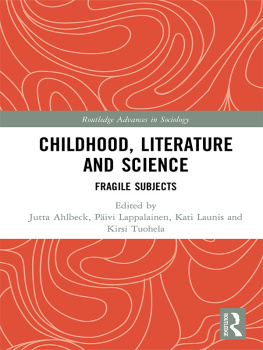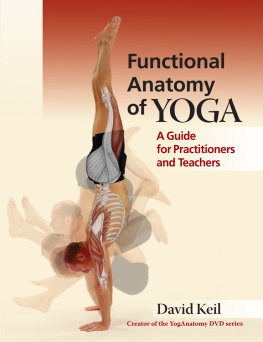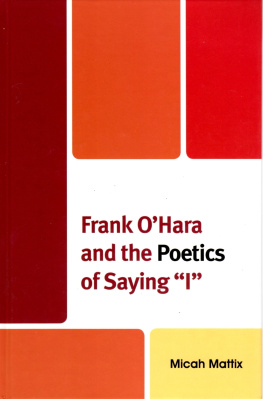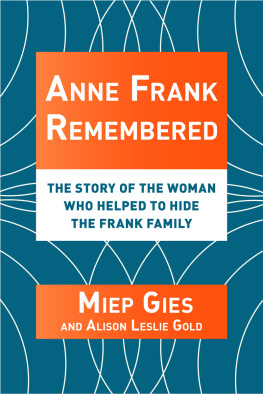Frank C. Keil - Wonder: Childhood and the Lifelong Love of Science
Here you can read online Frank C. Keil - Wonder: Childhood and the Lifelong Love of Science full text of the book (entire story) in english for free. Download pdf and epub, get meaning, cover and reviews about this ebook. year: 2022, publisher: MIT Press, genre: Children. Description of the work, (preface) as well as reviews are available. Best literature library LitArk.com created for fans of good reading and offers a wide selection of genres:
Romance novel
Science fiction
Adventure
Detective
Science
History
Home and family
Prose
Art
Politics
Computer
Non-fiction
Religion
Business
Children
Humor
Choose a favorite category and find really read worthwhile books. Enjoy immersion in the world of imagination, feel the emotions of the characters or learn something new for yourself, make an fascinating discovery.
- Book:Wonder: Childhood and the Lifelong Love of Science
- Author:
- Publisher:MIT Press
- Genre:
- Year:2022
- Rating:4 / 5
- Favourites:Add to favourites
- Your mark:
- 80
- 1
- 2
- 3
- 4
- 5
Wonder: Childhood and the Lifelong Love of Science: summary, description and annotation
We offer to read an annotation, description, summary or preface (depends on what the author of the book "Wonder: Childhood and the Lifelong Love of Science" wrote himself). If you haven't found the necessary information about the book — write in the comments, we will try to find it.
Wonder: Childhood and the Lifelong Love of Science — read online for free the complete book (whole text) full work
Below is the text of the book, divided by pages. System saving the place of the last page read, allows you to conveniently read the book "Wonder: Childhood and the Lifelong Love of Science" online for free, without having to search again every time where you left off. Put a bookmark, and you can go to the page where you finished reading at any time.
Font size:
Interval:
Bookmark:
Wonder
Childhood and the Lifelong Love of Science
Frank C. Keil
The MIT Press
Cambridge, Massachusetts
London, England
2022 The Massachusetts Institute of Technology
All rights reserved. No part of this book may be reproduced in any form by any electronic or mechanical means (including photocopying, recording, or information storage and retrieval) without permission in writing from the publisher.
The MIT Press would like to thank the anonymous peer reviewers who provided comments on drafts of this book. The generous work of academic experts is essential for establishing the authority and quality of our publications. We acknowledge with gratitude the contributions of these otherwise uncredited readers.
Library of Congress Cataloging-in-Publication Data
Names: Keil, Frank C., 1952 author.
Title: Wonder : childhood and the lifelong love of science / Frank C. Keil.
Description: Cambridge, Massachusetts : The MIT Press, [2022] | Includes bibliographical references and index.
Identifiers: LCCN 2021007025 | ISBN 9780262046497 (hardcover)
Subjects: LCSH: Cognition in children. | Reasoning in children. | Intuition. | ScienceStudy and teaching.
Classification: LCC BF723.C5 K424 2022 | DDC 155.4/13dc23
LC record available at https://lccn.loc.gov/2021007025
d_r0
For Kristi
List of Figures
A third-grade student in Moscow in the early 1960s, seeming to confidently answer a question in an attentive classroom. This is just one example of an avalanche of similar depictions that circulated in the United States after the embarrassing launch of Sputnik. Despite being told that Russian children were far ahead of the United States in math and science in terms of curriculum and work ethic, rather than being discouraged by such comparisons, many children of my generation were inspired by such possibilities as the United States greatly ramped up support for science education.
Perceiving causality. Panel a shows a simple case of launching. Events of this type elicit a strong impression of the black ball causing the movement of the gray one. In panel b, a one-second delay occurs before the gray ball moves. In panel c, there is a spatial gap between where the black ball stops and the gray one starts. Both manipulations block the sense of a causal interaction between the two balls.
This scene, composed entirely of naturally occurring objects, nonetheless immediately indicates a kind of order that we would only attribute to goal-directed agents. It insists that an intentional agent must have created the array and that it couldnt have possibly arisen though random processes.
Overimitation. Young humans copy both the steps that seem causally irrelevant retrieving the desired object, as shown in the top panel, as well as those steps that seem causally relevant as shown in the bottom panel. In contrast, primates only copy those steps that seem causally relevant. (Adapted from V. Horner & A. Whiten. (2005). Causal knowledge and imitation/emulation switching in chimpanzees ( Pan troglodytes ) and children ( Homo sapiens ). Animal Cognition, 8, 164181.)
Grasping the division of cognitive labor. Despite having never heard of the typical departments and academic divisions of the modern university, children as young as five are able to infer relative knowledge overlaps in the natural and social sciences, as represented by links traversed between any two fields in this hierarchy. Thus, a person who knows all about one phenomenon in physics (limited here to mechanics) is seen as more likely to know more about another physics phenomenon than someone from another discipline even when the two physics events seem very different at the surface level. In addition, experts in physics were judged to have a better chance of knowing something about a phenomenon in chemistry than one in economics. Divisions in the humanities do not fit into the same hierarchy as they tend not to be organized according to underlying causal patterns. (Adapted from F. C. Keil, C., Stein, L. Webb, V. D. Billings, & L. Rozenblit. (2008). Discerning the division of cognitive labor: An emerging understanding of how knowledge is clustered in other minds. Cognitive Science, 32, 259300.)
Typical mechanistic hierarchies in the biological sciences and engineering. Functions are explained by mechanisms and subfunctions that can, in principle, continue decomposing downwards for many levels. We see different kind of causal architectures, such as cycles and branching chains. Here, the unpacking of causal component B is shown. Comparable decompositions occur for AE, with part of As decomposition in light gray. In practice, practitioners in disciplines confine themselves to just a few layers, often just one. These hierarchies suggest clear starting and end points when, in fact, cycles are often closer to reality. A more accurate, but confusing illustration might use a three-dimensional cone. A strong grasp of mechanisms underlying an entity would involve a sense of this hierarchy and its major components and layers. (Inspired by C. Craver & J. Tabery, Mechanisms in Science, in Edward N. Zalta, Ed., Stanford Encyclopedia of Philosophy , Summer 2019 ed., https://plato.stanford.edu/archives/sum2019/entries/science-mechanisms .)
Increasing mechanistic opacity. A 1963 Triumph Spitfire (top) had no transistors at all if the radio was omitted. In contrast, comparable 2021 cars, such as a Mazda Miata, have several billion transistors. While many mechanical operations were easily seen under the hood of the Spitfire, the Miatas workings are mostly obscured.
Characteristic to defining shifts in word meanings may sometimes be erroneously construed as indicating a general shift from a concrete stage of thought to an abstract stage. Children do shift from interpreting meanings in terms of large sets of characteristic features (darker lines) to meanings that focus on a few defining features (lighter lines). This happens at roughly the same time for most terms in a tightly related semantic field, such as kinship terms, but at very different times across domains. For words without clear definitions, analogous shifts occur from characteristic features to compact causal theories. (From Keil, F. C. (1989). Concepts, kinds, and cognitive development . MIT Press.)
Debbie Levin and Ilma Levine, founders of the Sciencenter in Ithaca, New York, at its initial construction in 1992. Levin and Levine made sure that exciting demonstrations never eclipsed or displaced the fascinating science behind the display.
Teaching science and engineering through history. Internal combustion engines as taught through the evolution of ideas over thousands of years. The lesson began with the discovery of energy stored in chemical bonds when certain compounds flared brightly when ignited. Containment of these compounds led to early firecrackers and bombs. This led to the use of chemical energy to move objects, such as cannons. This presented a challenge of turning linear motions into continuous rotational motions. To explain how this problem was solved, instruction turned to a parallel history of steam-generated power and the development of pistons, valves, and flywheels. A series of interactions between the two evolving technologies led to the final working internal combustion engine.
The corrosive effect of extrinsic rewards on creativity. The expected reward (ER) child, focusing on mere quantity, churned out a large number of shoddy drawings, while the no reward child (NR), drew a much more aesthetically interesting single drawing.
Novice and real explanations of helicopter flight. People can grossly overestimate their understanding of how helicopters work. Many adults have not much more than (a) in mind while believing they have something closer to (b).
Next pageFont size:
Interval:
Bookmark:
Similar books «Wonder: Childhood and the Lifelong Love of Science»
Look at similar books to Wonder: Childhood and the Lifelong Love of Science. We have selected literature similar in name and meaning in the hope of providing readers with more options to find new, interesting, not yet read works.
Discussion, reviews of the book Wonder: Childhood and the Lifelong Love of Science and just readers' own opinions. Leave your comments, write what you think about the work, its meaning or the main characters. Specify what exactly you liked and what you didn't like, and why you think so.

